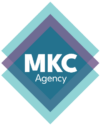“The list” is your outbound strategy. Don’t underplay it. In an ideal world leadership will have “the list” built before they hire sales and set them loose. But that isn’t always the case. So on top of individual list building, the ability to create a highly-targeted list of prospects for the org is a key skill for top sales talent.
Step 1: Understand your offering.
- What problem is your product meant to alleviate? If there are multiple problems, which is the most important? (Key: Ask your customers if you aren’t sure!)
- Is there something about your product that has caused you to close deals in the past?
- What specifically helps you close difficult leads? What feature, service or specific do customers say wowed them and got them to sign?
- Could you explain your product to your grandparents? What about a young child? If you didn’t have it before you, what words would you use to describe the value of what you do to someone young or old?
- What would your top customers say is the most frustrating part of your product or service?
- What would those same customers say is the most helpful?
- Would you be comfortable using the product or service you are selling in your day-to-day life?
This is your unique service offering. If you have an excellent marketing team, they may have already wrapped it up for you in a cute little bow. If not, you may have to do some legwork yourself. Who are the product resources you can talk to about this? Which customer’s can you reach out to to get their feedback? Where can you store that info for other people’s usage? The best sales resources help the whole team win!
Step 2. Understand your buyer
Check out Hubspot’s “buyer persona tool here: https://www.hubspot.com/make-my-persona
While a bit simplistic for my tastes, this will get you through the essential stages of creating a persona. It covers things like:
Industry – Which industries do your best customers work in?
Company size – Are those customers a similar size?
Job title – Are your buyers typically directors? Senior managers? C-Level employees? VPs? Which team do they typically work on?
Revenue – How much revenue do your customers typically earn in a year Is there a certain threshold your best customers are above?
But let’s dive a bit deeper, shall we:
Most substantial challenges and pain points – What issue do they use your product or service to solve? Are there multiple pain points they experience? Which can you solve for?
Key success metrics and goals – How do they measure success? Which destinations are they trying to achieve with your product? Which goals have they already achieved with your product?
Product preferences – What do your customers like most about your product or service? What do they dislike? What are their must-haves for new products or services?
Technographics – Which tools do they already use? Do they leverage tools or platforms that integrate with your products? Have they implemented a competitor’s product?
Engagement partialities – Do your best buyers prefer to engage by phone, email, social media, in person, on zoom? Is there a particular time of day your buyers are most often available? How many attempts does it typically take your buyers to engage with your sales outreach?
Communication styles – How do your prospects and customers talk about their industry? The market? Your product? Do they like more technical conversations, or do they want you to use specific industry jargon? What types of words and sayings are popular amongst your buyers? What tone do they use?
And deeper
Key motivations and buying triggers – What spurs to them purchase new products? Is there an event or set of circumstances that typically signals their willingness to purchase?
Customer Lifetime Value – On average, how much are your customers worth to your business? How much $$ do they contribute over their lifetime tenure with your company? How does their value correspond with their industry, company size, and other metrics outlined above?
Referral potential – Which customers have the most referral potential? How much business does your average customer refer? Are there key metrics you can score for that indicate how likely they are to bring you referrals? What are they?
Product use – What governs a customer’s likelihood of making additional purchases, expanding their feature set, or being upsold on another offer?
Advocacy – Are there any aspects correlated with the probability of a customer becoming a brand advocate?
Brand value – Do your top customers lend credibility to your company because of their brand value? How does this added value influence your ability to make additional sales?
Step 3. Understand your company
This piece lies heavily on leadership, but advocate for yourself if you aren’t being provided what you need to succeed.
- Where is the company trying to go? Revenue? Profit? Logos? What is the goal? When is the timeline?
- What is the brand image you’re trying to convey?
- Are there specific industries you are trying to grow your presence in?
- Where are the most significant opportunities for growth?
- Is there a new product roadmap you should be aware of?
- Which companies (or indicators companies might have) do you have an unfair advantage with? What can you do better than anyone else, and who would benefit from that most?
Step 4. Organize your intel & start identifying key players & accounts
These things happen in tandem. Create a spreadsheet. Please share it with your entire outbound team, and get to work. Use your tech stack. I like to use google sheets to create shared docs that organize the data by what MATTERS to our sales team. IE: All the things you defined above!
Start with 50-100 accounts that you want the whole team chasing. These are the ones that hit all the company goals. The ones you know are pre-qualified to buy—the dream accounts. Everybody should be throwing their weight behind getting these guys signed.
Then create your target list of 50 accounts (separate from “the list”) that are accounts you know you want to target, but that might be less obvious. Shoot for the “low hanging fruit.” Companies that are buying right now. Companies with a specific problem you can solve. Focus on ten a week and rotate.
Make sure your list is tracking more than just stats. Buyer personas, motivators, and the value you bring to their specific table should all be outlined. Set yourself up to win. Your CRM may be built out for this, but if it isn’t – keep moving forward. Work with what you have. Excel spreadsheets worked for many years.
Use Social Media, Google Alerts, Job Listings, Chrome Plugins around tech stacks (intricately, ZoomInfo etc), Historical customers and prospect data, existing customer and prospect data, sales intel, data providers, etc
Get it all in your spreadsheet and start talking about it as a team. Keep the list updated. Discuss when companies should be moved off or on. Let the team know when you hit a roadblock. Update data as it changes. Brainstorm new inroads.
You can make a copy of my template to use for your accounts here: https://docs.google.com/spreadsheets/d/1OSpvWFS4O5L5YGZQim8byHFD5AwbcZm0QlPYd1smgnw/edit?usp=sharing
Bonus:
Whether inbound or outbound, score your leads. Identify five key aspects you look for in new accounts. Whether that’s something super niche like “uses a CDN load balancer” or something broad like “has revenue over $X/year.” Align this with your companies goals. If you are looking for logos you’d put on your site, add that. If you want to make a specific profit, ask yourself if the company will pay $$$ for the solution. Will they be easy to work with? Ultimately the things you score on are up to your business, but make the policy something that makes sense for everyone. Then your leads will sit on levels like in the below diagram based on how many points they score on your scorecard.

